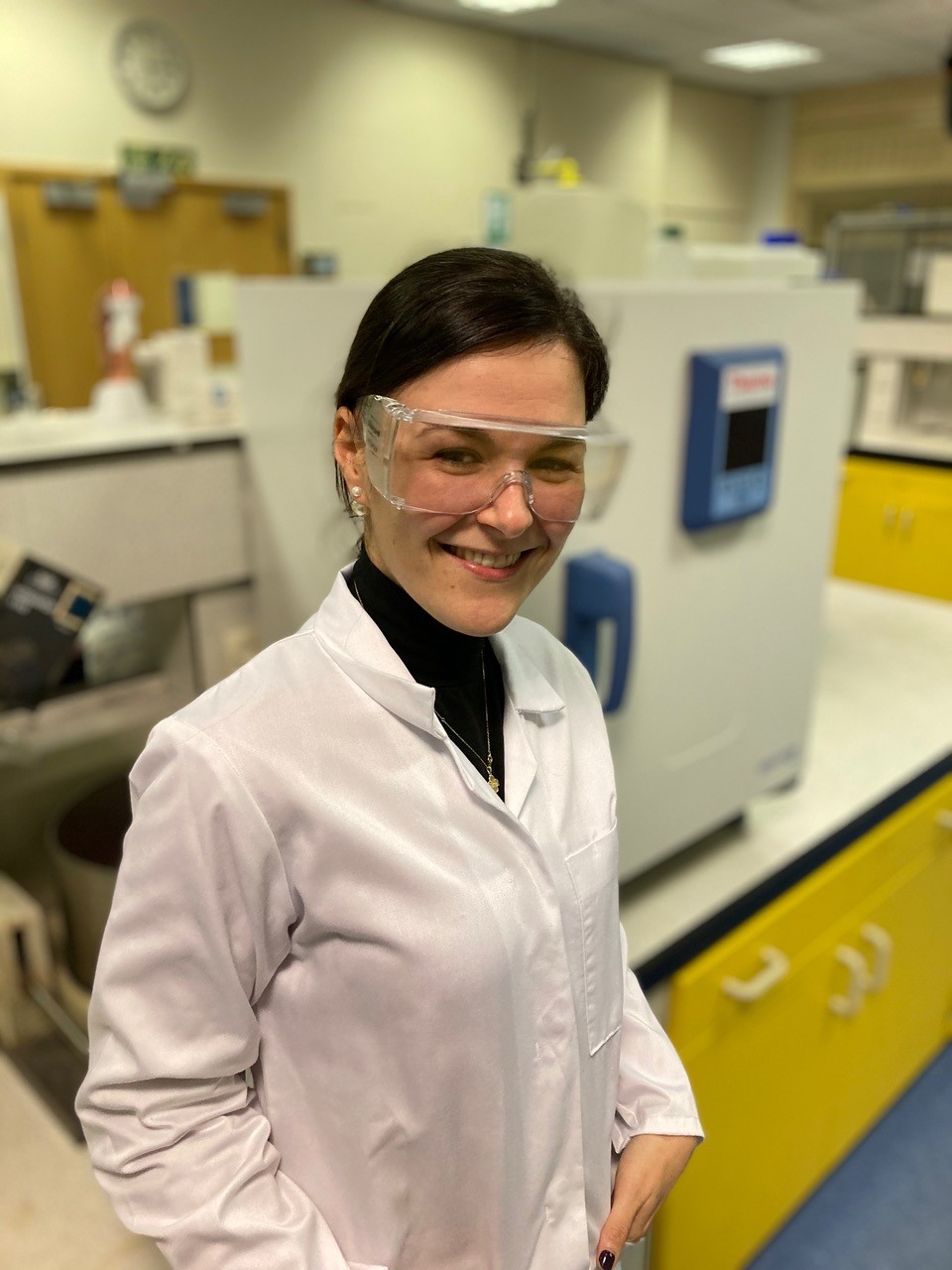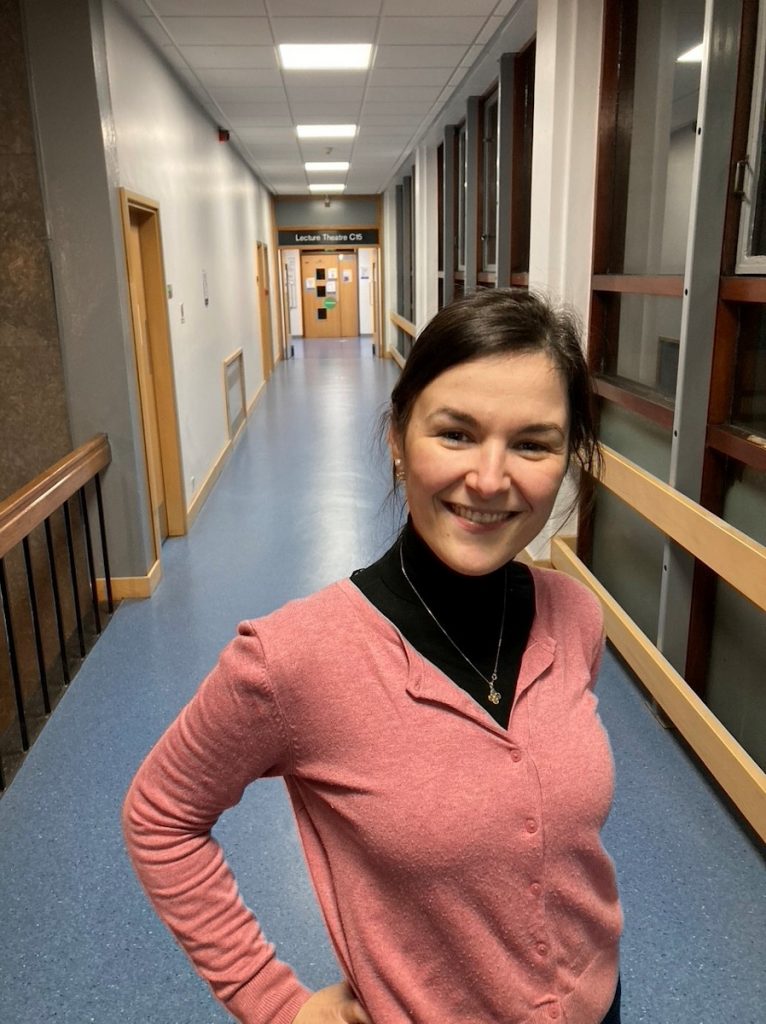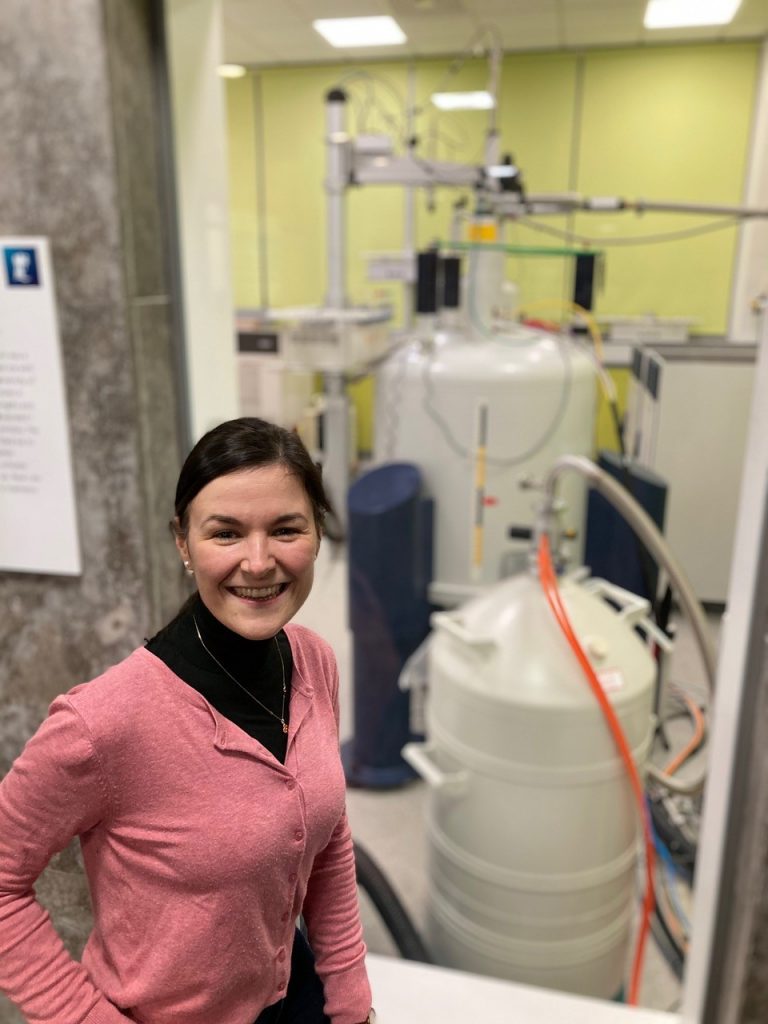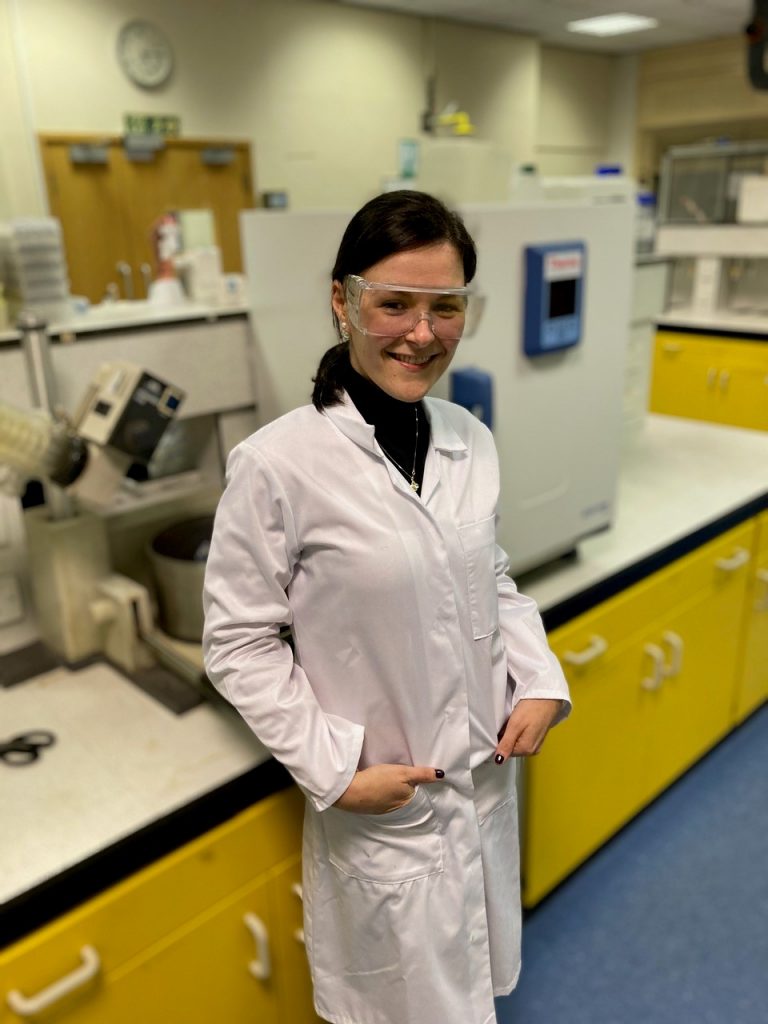
January 8, 2021, by Jo Gregory
The magic Lanterna: harnessing light for sustainable chemicals
Dr Anabel Lanterna is Assistant Professor in the School of Chemistry and a member of the Green Chemicals Beacon. Her expertise in photochemistry and materials chemistry has led her to work with world experts in the field, most recently with Prof. Tito Scaiano in Canada. In 2020 she moved to Nottingham to start her independent research career focusing on the design of heterogeneous photocatalytic processes.
What is your role here at Nottingham?
I am an Assistant Professor in the School of Chemistry. My research focuses on the design of heterogeneous photocatalysts for the generation of green fuels (H2) and the development of sustainable processes in the manufacturing of fine chemicals. I am also currently teaching part of a 4th-year module centred on how inorganic materials can interact with light, leading to fascinating properties that are applied to products we rely on in our daily life.
Could you tell me a bit about your research career?
As a PhD student at the University of Cordoba in Argentina, I studied the properties of plasmonic nanoparticles and their interactions with the environment. During a short internship at the University of Valencia in Spain, I was able to explore the potential of light not only for making nanoparticles, but also for enhancing their catalytic activity. Motivated by these initial studies, and after I obtained my PhD degree, I moved to Canada to work with Prof. Tito Scaiano in the field of heterogeneous photocatalysis – developing, among other concepts, the idea that the irradiance (number of photons per second per area) and the energy (wavelength) of light can be used to tune the activity of the photocatalysts. My scientific contribution to the fields of photochemistry and materials chemistry has helped me win the Gerhard Closs Postdoctoral Award from the Inter-American Photochemistry Society and the Young Materials Chemists Award from the Canadian Society for Chemistry. This year, I joined the School of Chemistry and the Green Chemicals Beacon to start my independent research career focussing on the design of heterogeneous photocatalytic processes.

How would you explain your research to an ordinary person?
In our lab we design materials that can harness the power of light to produce valuable chemicals under (environmentally and economically) mild reaction conditions. In this way, we can improve the manufacturing processes of many goods we use in our daily life – food preservatives, paints, cosmetics, pharmaceuticals, and more.
How does being part of the Green Chemicals Beacon help you achieve your goals?
I believe the efficient use of solar energy has great potential to help in the battle against the ongoing climate emergency. Accordingly, my research is focused on developing easily-reusable materials that harness the power of abundant and clean solar energy for sustainable manufacturing practices. Being part of the Beacon gives me the opportunity to collaborate with people from multiple disciplines with similar sustainability research goals. The industry collaboration afforded by the Beacon also helps our cross-disciplinary team develop implementable solutions to practical problems.

How does your research affect ordinary people?
A lot… Think, for instance, about pharmaceuticals. If we can reduce their production costs while synthesising them in a more environmentally friendly manner, we could improve our public health with more affordable medicines and at the same time reduce our environmental footprint. It is a win-win situation!
What current projects are you working on?
I am currently focussed on two main streams that involve the design of materials that can convert light into valuable chemicals. One of them focuses on the development of novel heterogeneous photocatalytic processes for the synthesis of target molecules relevant to the industry of fine chemicals, aiming to reduce the environmental impact of manufacturing processes. The second stream is related to the generation of green fuels, e.g., H2, using sunlight.
How has the pandemic affected your working day? Are you back in the labs or working from home?
The pandemic has affected me as many others around the world. However, I am part of that portion of the population who is lucky to have a supportive environment not only at work but also at home. When all this started, I was in Canada, preparing for my move to the UK. During the first months of the pandemic, there were so many uncertainties, that we decided it was better to start working from Canada. This was rather challenging, but not impossible, as colleagues at Nottingham were very supportive. Fortunately, I was able to move to the UK recently, and I am now really excited about going back to the lab. I work from home only a few days a week, I try to visit my lab each day and get some things done. The lab is almost ready to receive our first PhD student in a couple of weeks!

How did you become interested in science? Where do you get your inspirations from?
I was always a very curious person. This curiosity was mainly fed by my father, who I remember reading science magazines in his spare time. Later on, I had the privilege to work with Prof. Scaiano, a world leader in the field of photochemistry. His curiosity and constant excitement about chemistry were an inspiration for me. He showed me that as an academic we can contribute to our society, from developing transformative ideas to improve our daily life to educating the next generation of scientists. Our planet is facing tremendous challenges; as scientists, we can do our part to help and this inspires me to do better science every day.
Do you have any advice for young scientists?
Focus your research on topics you are curious and passionate about; don’t just go with the flow. It is really important you really enjoy what you are doing and to be patient, as things do not always work the way we expect. Be creative.
What is your favourite career moment so far?
I would like to highlight two moments that have given me great satisfaction thus far. One was when one of the materials we created in the lab got attention from different industrial partners. This showed me my research was getting close to potential real-life applications. The second great moment was when both the Canadian Society for Chemistry and the Inter-American Photochemistry Society awarded me for my contributions in the fields of materials science and photochemistry respectively; when your work is being recognised by your peers, it feels you are on the right track.
Anabel currently has a funded PhD position available in her research team. You can find more details and apply here.
To find out more about the Green Chemicals Beacon and how our team of researchers are working to secure the low carbon economy of the future, please visit the website or follow us on Twitter @UoN_GCB
No comments yet, fill out a comment to be the first

Leave a Reply